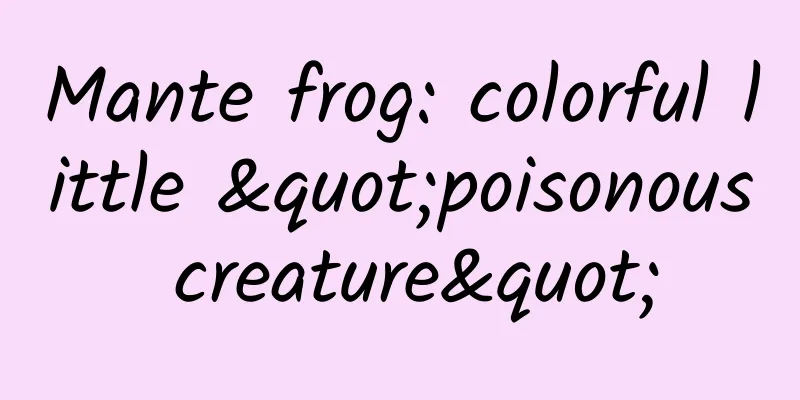You can have vanilla ice cream thanks to this boy

|
The online game World of Warcraft carries the youth and memories of a generation. In the hearts of many old players, the most exciting and memorable version is probably the original version with a level cap of 60, which is the so-called "vanilla era". It is called the vanilla era because vanilla is the most popular and common ice cream flavor in the United States, and the word vanilla is also extended to mean "basic, boring" in English. If something is described as vanilla, it is probably just plain and basic. However, the source of the vanilla scent, the vanilla plant , is not ordinary. Vanilla | Everglades National Park Vanilla flavor from orchid fruit There are about 110 species in the genus Vanilla, and three species are mainly cultivated as cash crops: Vanilla planifolia, Vanilla pompona, and Vanilla tahitensis. Among them, the most productive is Vanilla, which is widely planted all over the world; Large-flowered Vanilla has poor storage resistance and is more widely planted in the West Indies; Tahitian Vanilla, which has the least production, is a hybrid of Vanilla and another species V. odorata. Large-flowered vanilla (Figure 1) and Tahitian vanilla (Figure 2)丨H. Zell / wikimedia; pguiraudou.free.fr Vanilla is a climbing orchid that grows on tree trunks and rocks by relying on adventitious roots on its stems. Its thick stems and leaves are rich in chloroplasts, which can make full use of the scarce light in the rainforest for photosynthesis. Vanilla climbing a tree | Dutchlady1 / garden.org The flowers of vanilla are pale yellow-green, showing a beautiful curve, and they are not fragrant at all. The inside of the flower has the same syncytium structure as other orchids, but there is a thin film-like structure between the anther and the stigma, which is buckled on the stigma like a hat, called the stamen beak . It has caused great trouble for the commercial introduction of vanilla, which will be discussed later. Vanilla flower longitudinal section, the thin membrane between the anther and stigma is the beak丨B.navez / wikimedia Each vanilla flower has a lifespan of only one day, and only one in ten flowers can bear fruit in the natural environment. The fruit is shaped like a green sausage and has no fragrance at first. It must wait until it is fully mature before the vanillin glucoside in it is broken down by enzymes into vanillin and other aromatic substances. Vanillin is the source of the vanilla fragrance. At this time , the vanilla fruit has changed from green to dark brown , and some high-quality ones can even see white crystals of vanillin on the surface. Fresh vanilla fruit (left) and fully ripe fruit (right), the latter has fragrance丨B.navez / wikimedia Since aromatic substances such as vanillin are volatile, if the fruit is left on the plant to mature naturally, the aroma will easily be lost when harvested. Therefore, it is necessary to harvest it before maturity and wither, ferment and dry it under artificial conditions to ensure the quality. The blood and tears behind vanilla The process of fragrant vanilla becoming a basic spice was accompanied by many battles and wars. The first people to use vanilla were the Totonac people who lived in what is now eastern Mexico. According to their legend, vanilla was born from the blood of a princess who was killed by her father for eloping. In the middle of the 15th century, the legendary Aztec Empire on the Mexican Plateau marched eastward and conquered the Totonac Empire. Vanilla became an annual tribute to the emperor of the empire. The powerful empire did not enjoy vanilla peacefully for long. In 1521, Hernán Cortés led hundreds of soldiers equipped with war horses and muskets to conquer the Aztec Empire and made it a Spanish colony. Vanilla also took this opportunity to be introduced to Europe. A Mexican document describing vanilla from 1580, written in Nahuatl | Maunus / wikimedia When vanilla first came to Europe , it was used as an ingredient in chocolate , just as it had been in its native land for hundreds of years. At that time, chocolate was not the chocolate bar we eat now, but a drink made from cocoa beans, which was then slowly used to flavor cakes, breads and ice cream. Until the 18th century, vanilla could only be grown in Mexico. After being introduced to Europe, it could not bear fruit, and therefore could not be used as a spice, but only as an ornamental plant. At this time, natural history gradually became a fashion in the European upper class, so many botanical researchers began to figure out how to make vanilla bear fruit. Vanilla Ice Cream丨TuChong Creative It was he who pollinated the vanilla. In 1807, a vanilla plant in the UK suddenly produced fruit; but nothing happened afterwards, and no miracles ever happened to it or its offspring. It was not until 1836 that the Belgian botanist Charles Moren discovered the secret of vanilla's fruiting in Mexico: the stamen beak in the vanilla flower hindered the combination of pollen and stigma, and pollination had to rely on bees and hummingbirds in the place of origin. These pollinating animals certainly could not live in European botanical gardens, so vanilla could not bear fruit in a foreign land. It was not the Europeans who solved the pollination problem, but Edmond Aviles, a young slave born on the French island of Reunion. His method was simple: use a wooden stick to pry open the beak, and then gently pinch the flower with your hands. Two people who changed vanilla cultivation: Charles Moren (left) and Edmond Abiles (right) | wwikimedia After overcoming the difficulty of artificial pollination , vanilla was introduced to various European colonies in tropical and subtropical areas, and vanillin became a common spice. As for Aviles, the inventor of artificial pollination of vanilla, after France freed all slaves in the colonies in 1848, he changed his career to become a restaurant waiter; later he was sentenced to ten years in prison for stealing jewelry, but the judge reduced his sentence to five years in consideration of his contribution to vanilla cultivation. Artificial pollination of vanilla丨taisiedesign.com Even if large-scale commercial cultivation is achieved, the output of vanilla is still difficult to meet the huge global demand. Fortunately, the artificial synthesis of vanillin is not difficult, and a mature technical route has been developed as early as the 19th century. At present , most of the vanillin used in the world is artificially synthesized using substances such as lignin . In recent years, there has been a technology that uses eugenol and ferulic acid as raw materials and produces vanillin through microbial biotransformation, making the vanilla flavor more popular. Vanilla from Madagascar. The country of lemurs is now the world's largest producer of vanilla. | robertharding.com Author: Desert Porcupine |
<<: Amazing Oracle Bone Script丨Talking about Cicadas in Summer
>>: How to prevent chronic diseases that kill 41 million people a year?
Recommend
Tips for the 2nd phase of the Chan Theory Basic Course in 2022
Tips for the 2nd 2022 resource introduction of th...
How many colors does the earth have from the perspective of space?
The brilliant light at the edge of the earth What...
Have you seen the latest Android phone cost-effectiveness rankings during Double 11? Meizu dominates the list
[[437968]] When it comes to cost-effective Androi...
In order to avoid using pesticides, they plant wild flowers in farmland?
Vegetables and fruits are an essential part of a ...
Most of Hungary's electric vehicle investment comes from China, and its growth rate far exceeds that of Germany and France, making it the first small power in Europe
On the topic of electric vehicles, the whole of E...
Car owner sues Tesla: Model X suddenly accelerates automatically when parked
Tesla was recently sued by a Model X SUV owner wh...
Before the end of the year, remember to go to the Apple Store to replace your iPhone's battery
Affected by last year's iPhone throttling sca...
If you get bitten, you will go into coma and shock! Some people have died from this. If you see it, please stay away immediately!
It is summer now. In southern my country, a kind ...
How long does it take to make an e-commerce mini program? How long does it take to develop a small program?
E-commerce is something that many people are awar...
The back of the moon has more craters than the front. Is it because it protects the Earth from meteorite impacts? This hypothesis is totally unfounded
The moon we see all year round has the same face....
OPPO R11s review: Your girlfriend's favorite phone is now even better
When it comes to domestic mobile phone brands wit...
15 Free Ways to Promote Your Business Online
I have been engaged in the Internet industry for ...
How much do you know about the Winter Olympics?
The 24th Winter Olympic Games, the 2022 Beijing W...
After a calm reflection, a cold water is poured on the best-selling IP resource market
In 2013, the discussion about high-quality IP res...
The number of confirmed cases in the United States has risen to nearly 20,000, and the entire state of New York will be suspended!
According to statistics from the U.S. Centers for...









